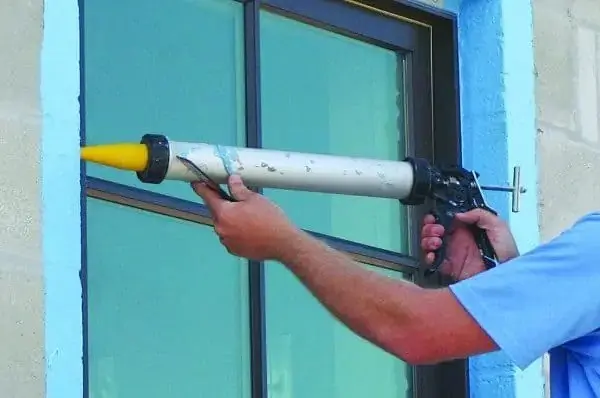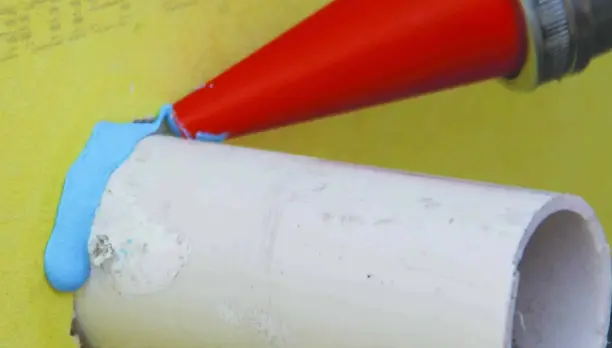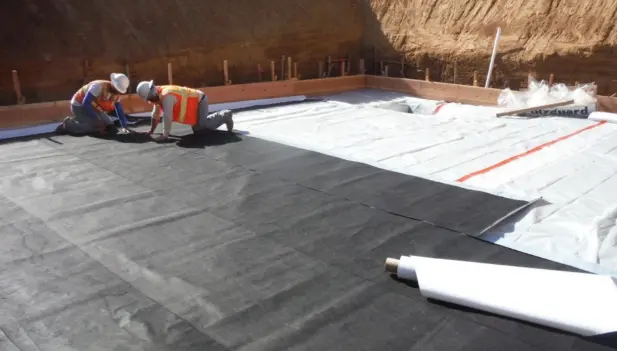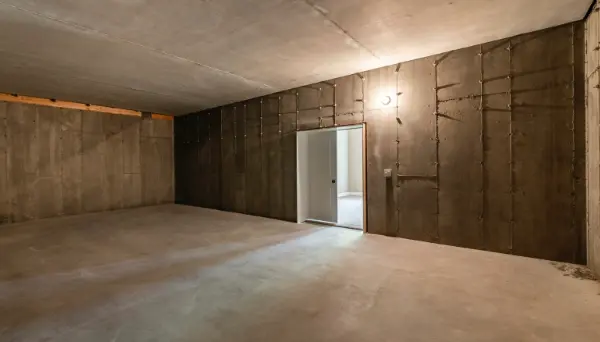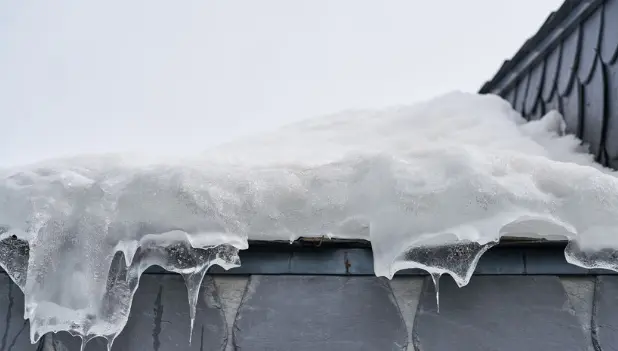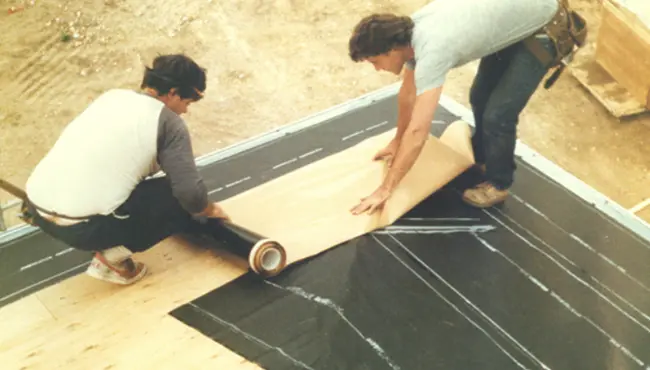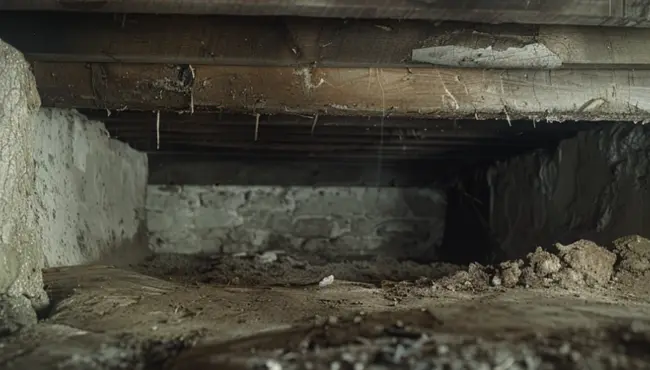Patio door flashing will prevent air, water, and insect infiltration into a home or building and help to create an energy-efficient and weather-resistive tight building envelope. In addition, properly installing quality sliding patio door flashings will significantly contribute to the structure's health and durability.
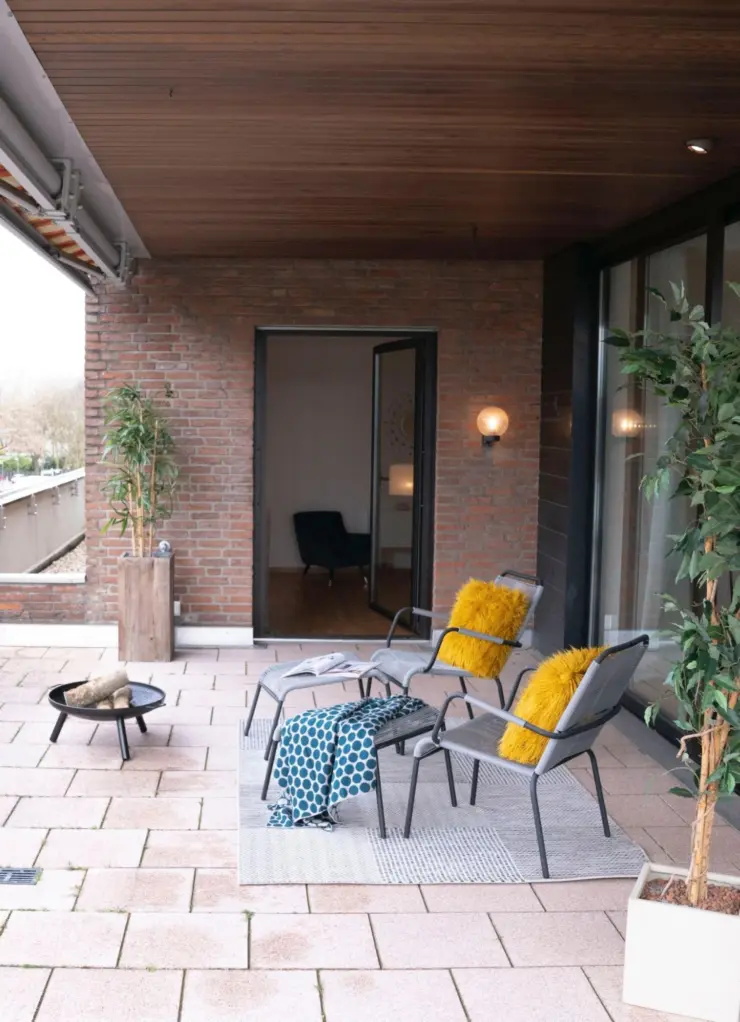
Choosing the best systems for flashing patio doors depend on the climate, building codes, and door design. Standard flashing systems include impermeable and permeable, fluid-applied membranes or self-adhering sheets. Poly Wall® patio door professionals can help you choose the optimum flashing system for your home or building.
Impermeable air barriers, like Aluma Flash™ UV Resistant Flashing, block air and vapor and work best in moist and hot locations (climate zones 1, 2, and 3A). They come as either a fluid-applied membrane or a self-adhering sheet.
Permeable air barriers, like Blue Barrier™ Flash ‘N Wrap™ 2400, work best for colder climates because they permit moisture vapor to flow through the membrane, to create diffusion out of the wall assembly. Permeable air barriers provide varying permeability rates and come as either fluid- or sheet-applied membranes.
Problems with Patio Door Flashing Systems
Weather-proofing problems can happen around several areas of a patio door due to insufficient patio door flashing details. Because of the complexity of adequately flashing around the patio door, Polyguard recommends contacting a Polyguard patio door professional or hiring an experienced patio door installer. Examples of problems include:
- Sealing around corners when installing flashing around glass patio doors can be particularly challenging, especially with inflexible flashing tape. The tape can leave a seam in the corner where the two products connect.
- After installing the door, applying flashing in the tight space around the door flange can be challenging.
- The door's base, where it sits on the plywood or foundation, creates a joint that will allow moisture and air infiltration if not adequately flashed.
Read on for eight vital steps to ensure a smooth installation of patio door flashings in hot/humid or in cold/mixed temperature climates. It is important to carefully follow the manufacturer's instructions when flashing a patio door and choose the right product for your project.
Eight Steps on How to Flash a Patio Door in Hot/Humid Climates
In humid and hot climate zones, correctly applying Polyguard products by following these eight steps will help produce a tight weather barrier around your patio door, and seal around nails with no staples, fasteners, or cap nails to stop thermal bridging.
1. Check Rough Opening: A successful patio door flashing install requires a plumb door frame, a level door sill, and square-90-degree corners.
2. Clean Opening: Clean around the patio door's jambs and sill to ensure a smooth, dust-free, and dry substrate.
3. Integrate the Opening:
- Apply 650 WB Liquid Adhesive™ Water Based Liquid Adhesive or ClearBond Liquid Adhesive to the clean and dry jambs and sill around the door opening.
- Cut Aluma Flash™ flashing to size with a utility knife.
- Apply flashing around jambs and sill pan from the exterior to the interior. A proper application will ensure an air-tight barrier between the door jamb and the weather barrier on the outside. With one end in place, slowly pull back the release film along the roll. As you expose more adhesive, place the membrane onto the surface.
- At the end of the first section, go over the surface to ensure 100% surface contact of rolled areas. Press out small wrinkles. Cut out and repair prominent wrinkles with a piece of material.
- When installing the next two rolls, overlap the ends 4" and sides 2.5" at the sides
4. Apply Filler: Apply Polyguard BB GF to integrate the concrete curb to the wood subfloor, then wrap a layer of Aluma Flash™ over the filler.
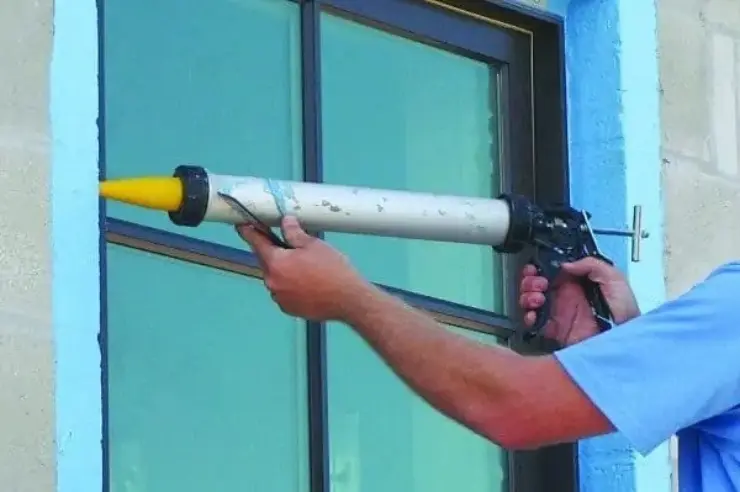
5. Check Corners: Aluma Flash™ can't flex and will not lay flat in the corners; therefore, apply Polyguard BB GF to integrate the corners and ensure a tight-clean corner to install the door. Also, apply filler to other imperfections or seams in the flashing.
6. Install Patio Door:
- Ensure a level sill at least a 1/16-inch over each foot or ⅛-inch over the entire opening.
- Install frame and level.
- Install the patio door.
7. Seal the Interior of the Door:
- Apply BB GF (formerly known as Poly Wall® Blue Barrier™ Gap Filler2200) over the bottom of the threshold to mold a rigid back dam into the filler.
- Screw the plate into the subfloor.
- Prime the plate and cover it with Aluma Flash™ to create a consistent seal along the backside of the rigid back dam.
- Apply Polyguard BB GF corners to create a consistent seal on the back side of the pan.
8. Final Step: Seal the jambs and head, which is typically done by the insulation crew or finish carpenters.
Eight Steps on How to Flash a Patio Door in Cold/Mixed Climates
In cold and mixed climates, correctly applying permeable Blue Barrier™ Flash ‘N Wrap 2400 liquid around a patio door will allow vapor inside the building to diffuse outside, to prevent structurally damaging condensation.
1. A successful patio door flashing install requires a plumb door frame, a level door sill, and square-90-degree corners.
2. Clean around the patio door's jambs and sill to ensure a smooth, dust-free, and dry substrate.
3. Apply Polyguard BB GF with a putty knife or trowel to imperfections (cracks, holes, etc.) in rough openings and sheathing surrounding openings.
4. Install sloped metal flashings at the base and beveled siding above the door frames to redirect water away from the structures. These flashings need specific placement and often adjustments to adjacent parts; therefore, it is best done by a professional.
5. Apply four to six inches of Blue Barrier™ Flash ‘N Wrap 2400 around the interior and exterior of the door's rough opening, the jambs, and sill. Use a chip brush to get the flashing into the corners of the opening.
6. Allow the flashing to dry for 30 minutes.
7. Install the patio door.
8. Apply Blue Barrier™ Flash ‘N Wrap 2400 over the window flange.
High Quality Polyguard Residential (formerly known as Poly-Wall) Flashing Products
Polyguard Residential quality products ensure a smooth installation of patio door flashings in eight steps - for hot/humid or cold/mixed temperature climates.
Aluma Flash™ UV-Resistant Flashing
The design of non-permeable Aluma Flash™ UV Resistant Flashing provides an excellent solution to keeping water and air out of homes in humid and hot regions. In addition, Aluma Flash™ UV Resistant, impermeable flashing (for above grade) helps contractors combat the challenge of keeping moisture-laden air from infiltrating the perimeter of a patio door.
Self-sealing tape, self-adhering, and non-permeable Aluma Flash™ flashing is a rubberized asphalt waterproofing coating laminated to a polyethylene film. Its aluminum top layer protects against UV exposure for 365 days. Additionally, the 20 mils thick product comes in several roll sizes with an easy-to-remove film release liner to efficiently and effectively flash patio doors.
Aluma Flash™ Flashing provides several advantages:
- Creates an impermeable, waterproof, weather-resistive barrier
- Adheres well when used per manufacturer's installation and performance requirements
- Resists most chemicals and ultraviolet rays
- Its elastomeric properties will not stretch or tear if the building moves slightly
- Offers superior adhesion when used per manufacturer's installation and performance requirements
- The aluminum surface will reflect heat and lower energy costs
Blue Barrier™ Flash ‘N Wrap 2400
Blue Barrier™ Flash ‘N Wrap 2400 creates a permeable and continuous membrane around a patio door. Environmental-friendly Blue Barrier™ Flash ‘N Wrap 2400 applies with a roller and uses Silyl Terminated Polyether (STPE) Technology. It does not require priming or mixing and allows wet surface applications.
Blue Barrier™ Flash ‘N Wrap 2400 dries fast to produce durable, permeable, and continuous membrane flashing that can withstand the installation of heavy patio doors in cold/mixed climate locations - essential to protecting your investment.
Blue Barrier™ Flash ‘N Wrap 2400 offers several essential advantages:
- Strong adhesion and superior shore hardness
- Durability to protect the door and buildings integrity
- Excellent indoor comfort and health
Polyguard BB GF (Blue Barrier Gap Filler)
Permeable Polyguard BB GF provides a structural adhesive and detail sealant to fill voids and seams and bond dissimilar materials. Builders can use Gap Filler2200 to prep surfaces before applying other Polyguard Blue Barrier™ products for patio door flashings and air barriers.
Polyguard developed BB GF (formerly Blue Barrier 2200) using Silyl Terminated Polyether (STPE) Technology. It comes in 10 oz. caulking tubes or 20 oz. sausages.
Ensure Smooth Flashing Installation with Polyguard Residential Products
Blue Barrier™ Flash ‘N Wrap™ 2400 (for colder climates) and Aluma Flash™ UV Resistant Flashing (for hot and humid climates) will help ensure a smooth installation of patio door flashing. Both systems stop air, water, and insect infiltration into a home or building when properly installed to help create an energy-efficient, weather-resistive, and tight building envelope.
Contact the Polyguard Residential Division professionals today for more information to ensure a smooth installation of patio door flashings.
